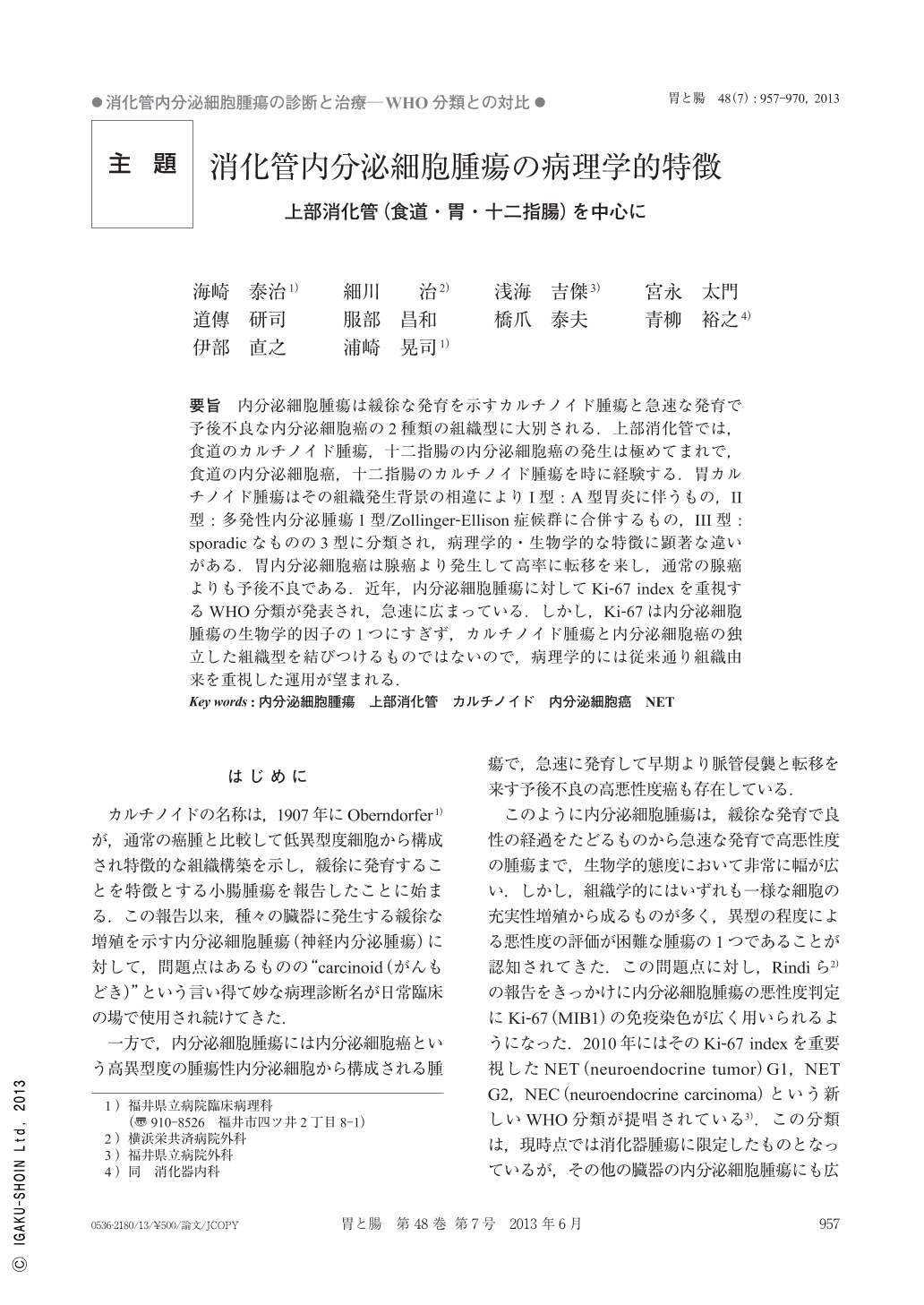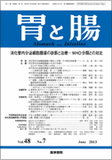Japanese
English
- 有料閲覧
- Abstract 文献概要
- 1ページ目 Look Inside
- 参考文献 Reference
- サイト内被引用 Cited by
要旨 内分泌細胞腫瘍は緩徐な発育を示すカルチノイド腫瘍と急速な発育で予後不良な内分泌細胞癌の2種類の組織型に大別される.上部消化管では,食道のカルチノイド腫瘍,十二指腸の内分泌細胞癌の発生は極めてまれで,食道の内分泌細胞癌,十二指腸のカルチノイド腫瘍を時に経験する.胃カルチノイド腫瘍はその組織発生背景の相違によりI型:A型胃炎に伴うもの,II型:多発性内分泌腫瘍1型/Zollinger-Ellison症候群に合併するもの,III型:sporadicなものの3型に分類され,病理学的・生物学的な特徴に顕著な違いがある.胃内分泌細胞癌は腺癌より発生して高率に転移を来し,通常の腺癌よりも予後不良である.近年,内分泌細胞腫瘍に対してKi-67 indexを重視するWHO分類が発表され,急速に広まっている.しかし,Ki-67は内分泌細胞腫瘍の生物学的因子の1つにすぎず,カルチノイド腫瘍と内分泌細胞癌の独立した組織型を結びつけるものではないので,病理学的には従来通り組織由来を重視した運用が望まれる.
Endocrine cell tumor is classified as carcinoid tumor with slow growth and ECC(endocrine cell carcinoma)has rapid growth and poor prognosis. For the upper gastrointestinal tract, carcinoid tumors in the esophagus and ECCs in the duodenum are extremely rare. ECC of the esophagus and carcinoid tumors of the duodenum are sometimes encountered. Gastric carcinoid tumor is classified into three types according to the difference in the developmental mechanism : Type I, associated with autoimmune chronic atrophic gastritis ; Type II, associated with multiple endocrine neoplasia type 1 and Zollinger-Ellison syndrome ; Type III, sporadic. There are noticeable differences in their pathological and biological characteristics. Most gastric ECCs arises from adenocarcinoma. They indicate at a high rate of metastasis and have a worse prognosis than ordinary adenocarcinomas. Recently, the WHO classification of gastroenteropancreatic neuroendocrine tumor focused on the Ki-67 index. This classification has been published and spread rapidly. But, Ki-67 is only one of the biological factors of endocrine cell tumors and it is not intended to be applied to connecting separate types of carcinoid tumors and ECC. So, for endocrine cell tumors, we should make a diagnosis based on tumor origin.

Copyright © 2013, Igaku-Shoin Ltd. All rights reserved.


